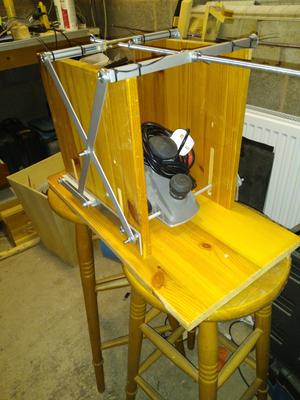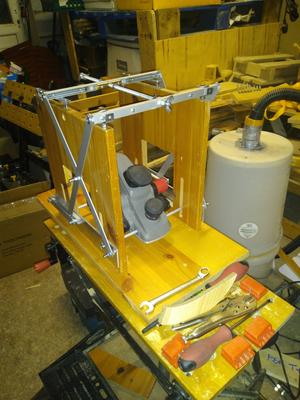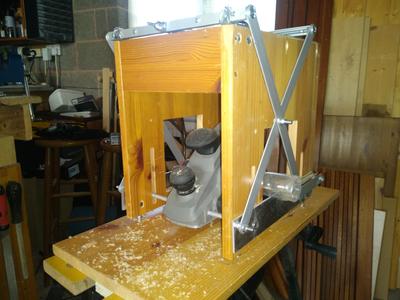FAILED PROJECT: DIY Thicknesser
FAILED PROJECT: DIY Thicknesser
For the New kitchen cabinets project I need a way to turn irregular, wonky, rough pallet wood into something a bit more uniform and straight. I've tried sanding and planing, but the results are still too variable to make good dovetail and tongue-and-groove joints which I will need to do for the cabinets and doors I'm planning to make. So I realised I needed a "thicknesser" - a special type of electric wood plane that can precisely shave planks flat and to a uniform thickness. Trouble is, they're really expensive - even for the cheap ones, so after a lot of searching round on ebay, gumtree and the DIY and tool shops, I decided that as I already have an OK electric plane, I'd have to make one. I mean, "how hard could it be?" - famous last words. I watched a few youtube vids and worked out a plan.
I decided I could use a scissor lift design to "fly" the plane at a defined height - that's all you need, right? I sketched a lot of ideas out, and set to building. This was going to be so easy, and I was going to hone a tone of skills in the process! Little did I know I'd bitten off more than I could chew :-(...
It went through several refinements, as I went through the build process and identified problems and came up with fixes.
Iteration 1
This first attempt might look a bit shonky, but it's actually far worse than that! It has no adjustment to account for the plane not being level due to the support bars bending and errors in my cutting etc. that get amplified by the scissor mechanism. In use, it would just plane the first 30 or so mm of the plank as it entered the machine, and then just "ride" on the thicker section of the plank without cutting anything more off. I think this is because of the aforementioned wonkiness of the plane. Still, the scissor lift seems to work OK. This iteration also lacks any way to attach a chip extractor hose - notice that the side panels are still largely solid apart from the slots for the support bars. I learnt a lot about using the router, though - the slots are relatively straight, but I did destroy a cheap bit in the process. Notice also that some bits are still held together with cable ties. Professional - not!


